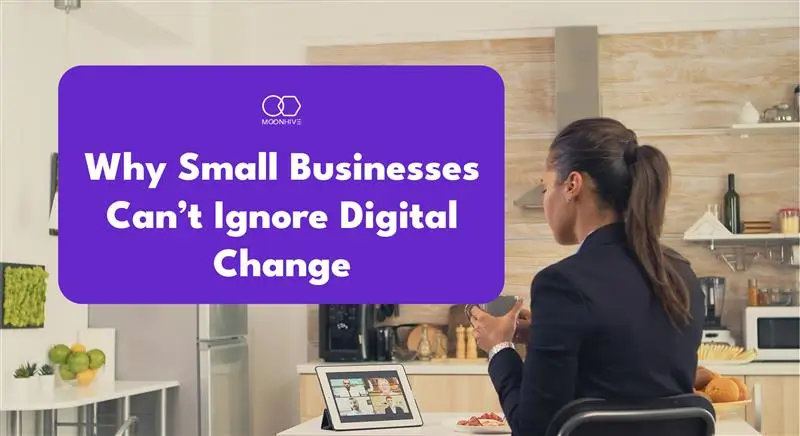Small business digital transformation 2025 is no longer optional. Running a small business has always been a balancing act managing operations, keeping customers happy, and competing with larger players. But in 2025, that balancing act has become more difficult.
Customers expect the same digital-first convenience they get from global platforms. Competitors, even local ones, are adopting CRM systems, automation tools, and smarter websites. The gap between “digital-first” and “manual-first” businesses is widening fast and for many small businesses, this year marks a turning point.
In our earlier article on construction CRMs, we saw how companies lost hours every week simply because site visit notes, proposals, and client communications weren’t connected. That inefficiency isn’t just inconvenient it directly eats into margins.
Why 2025 Feels Different
This isn’t the first time small businesses have faced digital pressure. So why is this year different?
- Accessible Tech: Tools once reserved for enterprises are now affordable even free at entry level.
- Economic Pressure: With margins shrinking, inefficiency costs more than it ever has.
- Customer Behavior: Whether it’s healthcare, retail, or real estate, digital-first interactions are now the baseline.
- Competitive Landscape: Businesses that digitized early are pulling away from the pack.
We highlighted a similar shift in our energy CRM blog, where even traditional industries are racing to digitize operations. The same urgency now applies to professional services, healthcare clinics, and retail shops.
Why 2025 Feels Different for Small Business Digital Transformation
It’s tempting for leaders to wait after all, the old ways “still work.” But here’s the risk:
- Lost Customers: If your competitors offer online booking or instant communication, customers will naturally choose them.
- Higher Costs: Manual processes take more staff hours, which compounds over time.
- Slower Growth: Without centralized systems like CRMs, scaling from 20 to 100 employees creates chaos instead of efficiency.
Our logistics CRM post showed how businesses relying on WhatsApp messages and Excel sheets hit a hard ceiling they simply couldn’t take on more consignments without adding headcount. That’s exactly the kind of barrier small businesses across the US are about to hit in 2025.
The Risks of Delaying Small Business Digital Transformation 2025
Different industries are already proving that transformation doesn’t need to be overwhelming:
- Real Estate: By digitizing lead capture forms and automating follow-ups, developers improved conversions by 25%.
- Construction: CRM adoption reduced proposal turnaround time from five days to two.
- Logistics: Automating dispatch notifications cut manual calls by 40%.
- Energy: Businesses streamlined projects with digital ticketing and maintenance reminders.
The lesson? Digital transformation is not about adopting every new tool it’s about picking the right systems that eliminate bottlenecks.
The 2025 Mindset Shift
The most important change for small businesses isn’t technical it’s cultural. Leaders must stop viewing digital transformation as a “big project for later” and start seeing it as a continuous advantage for today.
Even small steps like moving from spreadsheets to a CRM, or automating invoice reminders can compound into meaningful savings and growth. And those who start now will be the ones setting the pace in their industries.
2025 won’t be kind to businesses that resist change. The good news is that small businesses don’t need enterprise budgets or massive teams to transform. They need clarity, the right tools, and a willingness to rethink old habits.
At Moonhive, we’ve seen across industries from construction to energy to real estate that once small businesses take the first digital step, the impact is visible within months.
For leaders, the real question isn’t “Should I digitize?” anymore. It’s “How fast can I start?”
